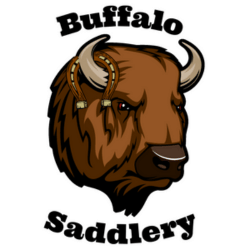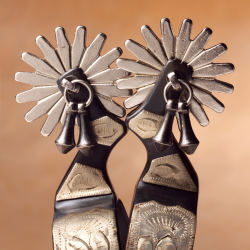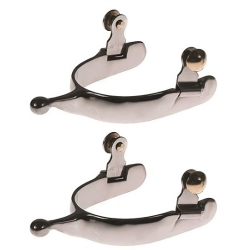When it comes to horse riding, there are various pieces of equipment that are essential for both the comfort and safety of both the horse and the rider. One such piece of equipment is the breast collar. If you're new to the world of horse riding or simply curious about the different tools used in equestrian activities, you may be wondering, "What is a breast collar used for?"
In this blog post, we will delve into the basics of a breast collar, exploring its definition, types, and materials used in its construction. We will also discuss the primary purposes of a breast collar, including how it aids in horse riding, its role in harnessing, and the safety measures it provides.
Additionally, we will provide a step-by-step guide on how to properly use a breast collar, including fitting and adjustments, connecting it with the saddle, and troubleshooting potential issues. Lastly, we will offer tips and advice on how to maintain and clean your breast collar, ensuring its longevity and effectiveness.
Whether you're a seasoned equestrian or a novice rider, understanding the functionality and importance of a breast collar is crucial for a successful and enjoyable riding experience. So, let's dive in and uncover the ins and outs of this essential equestrian gear.
Introduction: Understanding the Basics of a Breast Collar
A breast collar is a vital piece of equipment used in horse riding and harnessing. It is designed to secure the saddle in place and prevent it from sliding backward during various equestrian activities. In this section, we will explore the fundamental aspects of a breast collar, providing you with a comprehensive understanding of its purpose and functionality.
To begin with, let's define what a breast collar actually is. A breast collar, also known as a breastplate or a yoke, is a strap-like piece of equipment that wraps around the horse's chest, just behind the shoulders. It consists of two shoulder straps that connect to the saddle's girth or cinch, and a central strap that runs across the horse's chest, connecting the shoulder straps together.
The design and construction of a breast collar may vary depending on its intended use and the discipline of riding. Different styles of breast collars include traditional English-style breastplates, Western-style breast collars, and endurance or trail riding breast collars. Each type has its own unique features and characteristics that cater to specific riding styles and purposes.
When it comes to materials, breast collars are commonly made from leather, nylon, or synthetic materials. Leather breast collars are favored for their durability, classic appearance, and flexibility. Nylon and synthetic breast collars, on the other hand, are known for their affordability, water resistance, and ease of maintenance.
Now that we have a basic understanding of what a breast collar is and the materials used in its construction, let's move on to explore the main purposes and functions of a breast collar in horse riding.
What is a Breast Collar
A breast collar, also known as a breastplate or a yoke, is a piece of equipment used in horse riding and harnessing. It is designed to secure the saddle in place and prevent it from sliding backward during various equestrian activities. In this section, we will delve deeper into the definition and description of a breast collar, explore different types of breast collars, and discuss the materials used in making them.
Definition and Description of a Breast Collar
A breast collar is a strap-like device that is worn around the horse's chest, just behind the shoulders. It is typically made up of two shoulder straps that go over the horse's shoulders and a central strap that runs across the chest, connecting the shoulder straps together. The shoulder straps are attached to the saddle's girth or cinch, ensuring stability and preventing the saddle from slipping backward.
The purpose of a breast collar is to distribute the pressure applied by the rider or the harness evenly across the horse's chest. By doing so, it helps to maintain balance and stability, especially during activities that involve sudden stops, turns, or jumps. Additionally, a breast collar can help prevent the saddle from shifting forward, which can be uncomfortable for the horse and potentially dangerous for the rider.
Different Types of Breast Collars
There are several types of breast collars available, each designed to cater to specific riding styles and disciplines. Let's take a closer look at some of the common types:
-
Traditional English-Style Breastplates: These breast collars typically consist of a central strap that runs across the chest and two shoulder straps that attach to the saddle's girth. They are commonly used in English riding disciplines such as dressage, show jumping, and eventing.
-
Western-Style Breast Collars: Western breast collars are usually wider and more decorative than their English counterparts. They often feature intricate leatherwork, tooling, or decorative metal accents. Western riders often prefer breast collars that are wider and provide more coverage across the chest.
-
Endurance or Trail Riding Breast Collars: These breast collars are designed specifically for long-distance riding, such as endurance races or trail riding. They are typically lightweight and made from durable materials such as nylon or synthetic materials. They offer maximum comfort and freedom of movement for the horse while providing the necessary stability.
Materials Used in Making Breast Collars
Breast collars can be constructed using various materials, each with its own advantages and considerations. The most common materials used in making breast collars include:
-
Leather: Leather breast collars are widely popular due to their durability, strength, and classic appearance. They are known for their flexibility, which allows for a comfortable fit on the horse's chest. Leather breast collars require regular cleaning and conditioning to maintain their quality and prevent cracking or drying out.
-
Nylon: Nylon breast collars are lightweight, affordable, and easy to clean. They are resistant to water and can withstand tough weather conditions. Nylon breast collars are often preferred for trail riding or endurance activities due to their durability and low maintenance requirements.
-
Synthetic Materials: There are also synthetic breast collars available that are made from materials such as biothane or neoprene. These materials offer similar qualities to nylon, including water resistance and easy maintenance. Synthetic breast collars are popular for their affordability and versatility.
In the next section, we will explore the purpose and benefits of using a breast collar in horse riding and harnessing activities.
The Purpose of a Breast Collar
The purpose of a breast collar extends beyond simply securing the saddle in place. In this section, we will explore the various benefits and functions of using a breast collar in horse riding and harnessing activities. We will discuss how a breast collar aids in horse riding, its role in harnessing, and the safety measures it provides.
How a Breast Collar Helps in Horse Riding
-
Stability and Balance: A properly fitted breast collar helps maintain the stability of the saddle, preventing it from sliding backward. This is particularly important during activities that involve sudden stops, turns, or jumps. The breast collar distributes the pressure more evenly across the horse's chest, allowing for better balance and reducing the risk of the saddle tipping or sliding.
-
Enhanced Control: By keeping the saddle in place, a breast collar allows the rider to have better control over the horse's movements. It helps in maintaining a consistent position, especially when riding over uneven terrain or during challenging maneuvers. The added stability provided by the breast collar allows the rider to have a more secure seat, minimizing the chances of being unseated or losing control.
-
Improved Comfort: A well-fitted breast collar ensures that the saddle remains in the correct position, preventing it from shifting forward and causing discomfort to the horse. It reduces the pressure on the horse's withers, where the saddle tends to exert the most pressure. This helps to alleviate any potential soreness or discomfort that can occur during long rides or strenuous activities.
Breast Collar's Role in Harnessing
-
Secure Attachment: In harnessing, a breast collar plays a crucial role in attaching the horse to the vehicle or equipment. It connects to the traces, which are the straps that extend from the vehicle to the horse's harness. The breast collar ensures a secure connection, preventing the horse from shifting or pulling away from the vehicle.
-
Effective Distribution of Pulling Forces: When pulling a carriage or other equipment, the breast collar helps distribute the pulling forces evenly across the horse's chest and shoulders. This prevents excessive strain on any particular area and promotes a more balanced and efficient pulling motion.
Safety Measures Provided by a Breast Collar
-
Prevents Saddle Slippage: One of the primary safety benefits of using a breast collar is its ability to prevent the saddle from slipping backward. This is particularly important during fast-paced activities or when riding in challenging terrain. By keeping the saddle securely in place, the breast collar reduces the risk of accidents, such as the saddle sliding underneath the horse.
-
Extra Attachment Points: Some breast collars come with additional attachment points, such as rings or D-rings, which can be used to attach other equipment or accessories. These attachment points provide versatility and convenience, allowing riders to carry essential items such as water bottles, GPS devices, or trail markers.
In the next section, we will provide a detailed guide on how to properly use and adjust a breast collar for optimal fit and functionality.
How to Use a Breast Collar
Using a breast collar correctly is essential to ensure the comfort and safety of both the horse and the rider. In this section, we will provide a step-by-step guide on how to properly use a breast collar, including fitting and adjustments, connecting it with the saddle, and troubleshooting potential issues.
Proper Fitting and Adjustments
-
Measure the Horse: Before purchasing a breast collar, it's important to measure your horse's chest to ensure the correct size. Measure the circumference of the horse's chest just behind the shoulders, where the breast collar will sit. This measurement will help you choose the appropriate size.
-
Choose the Right Size: Breast collars come in various sizes, so it's crucial to select one that fits your horse correctly. A well-fitted breast collar should allow room for the horse to move its shoulders freely without restricting its range of motion. It should also be snug enough to prevent excessive movement but not too tight that it causes discomfort or restricts breathing.
-
Adjust the Straps: Once you have selected the appropriate size, it's time to adjust the straps for a proper fit. Start by attaching the shoulder straps to the saddle's girth or cinch. Ensure that the straps are not twisted and that they lie flat against the horse's shoulders.
-
Adjust the Chest Strap: The central strap that runs across the horse's chest should be adjusted to a length that allows for a comfortable fit. It should be snug but not too tight, with enough room for the horse to breathe and move freely. Avoid over-tightening, as it can restrict the horse's breathing and cause discomfort.
Connecting Breast Collar with the Saddle
-
Attach the Shoulder Straps: Fasten the shoulder straps to the saddle's girth or cinch. Make sure the attachments are secure, using buckles, snaps, or other fastening mechanisms provided with the breast collar.
-
Position the Central Strap: Once the shoulder straps are attached, position the central strap across the horse's chest. It should rest just above the point of the horse's shoulder, snugly but comfortably.
-
Secure the Central Strap: Fasten the central strap to the D-ring or attachment point on the opposite shoulder strap. Ensure that the connection is secure, but not overly tight, allowing for proper movement and comfort.
Potential Issues and Troubleshoots
-
Rubbing or Chafing: Check for any signs of rubbing or chafing under the breast collar. If you notice any discomfort or irritation, adjust the straps accordingly to alleviate pressure points. Consider using a fleece or neoprene cover to provide additional padding and prevent rubbing.
-
Restricted Shoulder Movement: Observe the horse's movement while wearing the breast collar. If you notice any restriction in shoulder movement, readjust the straps to allow for more freedom. A properly fitted breast collar should not hinder the horse's range of motion.
-
Saddle Slippage: If you experience saddle slippage even with a correctly fitted breast collar, check the tightness of the girth or cinch. Ensure that it is snug enough to keep the saddle in place. If the issue persists, consult with a professional saddle fitter or trainer for further guidance.
By following these steps and addressing any potential issues, you can ensure that the breast collar is properly used, providing the necessary support and stability during horse riding activities.
In the next section, we will discuss the importance of maintaining and cleaning your breast collar to prolong its lifespan and ensure its effectiveness.
Maintaining and Cleaning Your Breast Collar
Proper maintenance and cleaning of your breast collar are essential to ensure its longevity and effectiveness. In this section, we will provide guidance on routine inspection and maintenance, cleaning materials and techniques, as well as storage and handling tips.
Routine Inspection and Maintenance
-
Regular Check-ups: Inspect your breast collar regularly for any signs of wear and tear, such as frayed stitches, cracked leather, or damaged hardware. Pay attention to the areas where the breast collar comes in contact with the horse's body, as these areas often experience the most strain and may require more frequent inspection.
-
Repair or Replace: If you notice any issues during the inspection, promptly address them. Small repairs can be done at home, such as restitching loose threads or replacing worn-out buckles. However, for significant damage or structural issues, it's advisable to seek professional assistance or consider replacing the breast collar.
-
Keep it Clean: Regularly remove dirt, sweat, and grime from your breast collar to maintain its appearance and prevent deterioration. Cleaning should be done after every use, especially if the breast collar becomes heavily soiled or wet.
Cleaning Materials and Techniques
-
Remove Excess Dirt: Begin by brushing off any loose dirt or debris from the surface of the breast collar using a soft brush or cloth. This will help prevent the dirt from becoming embedded in the material during the cleaning process.
-
Gentle Soap Solution: Prepare a mild soap solution using a gentle leather cleaner or a mild dish soap mixed with warm water. Dip a clean sponge or cloth into the solution and gently scrub the breast collar, paying attention to any areas that are particularly dirty. Avoid using harsh chemicals or abrasive cleaners, as they can damage the leather or synthetic materials.
-
Rinse and Dry: After cleaning, rinse the breast collar thoroughly with clean water to remove any soap residue. Ensure that all soap is completely rinsed off to prevent irritation to the horse's skin. Allow the breast collar to air dry naturally, away from direct sunlight or heat sources.
Storage and Handling
-
Proper Storage: When not in use, store your breast collar in a cool, dry place away from direct sunlight and excessive humidity. Avoid storing it in a plastic bag, as this can trap moisture and cause mildew or mold growth. Instead, use a breathable storage bag or hang it on a sturdy rack or hook.
-
Avoid Extreme Conditions: Protect your breast collar from extreme temperatures and humidity, as they can cause the material to warp, crack, or deteriorate. Avoid exposing it to harsh chemicals or solvents that can damage the leather or synthetic materials.
-
Regular Conditioning: To keep the leather supple and prevent it from drying out or cracking, regularly apply a leather conditioner or oil to the breast collar. Follow the manufacturer's instructions and use a product specifically designed for leather care.
By following these maintenance and cleaning practices, you can ensure that your breast collar remains in good condition, prolonging its lifespan and maintaining its effectiveness.
In the final section, we will summarize the key points discussed in this blog post and provide a conclusion regarding the importance and functionality of a breast collar in horse riding.












































